This post may contain affiliate links. Please read my privacy policy.
Thai Panang Curry with Beef - an authentic Panang curry fried in thick coconut cream, providing a thick, creamy, soup-like gravy.

What Is Thai Panang
An authentic Thai Panang curry is fried in thick coconut cream as opposed to boiling, providing a thick, creamy, soup-like gravy.
It is a type of red Thai curry that is salty and sweet, with a nutty peanut flavor.
The name of the curry – Panang/Phanaeng, originates from my hometown, the beautiful island of Penang on the west coast of Malaysia.
And in most Thai restaurants, other than Thai Red Curry with chicken, beef is the most famous choice, best suited for a Panang curry.
Main Ingredients For Panang Curry
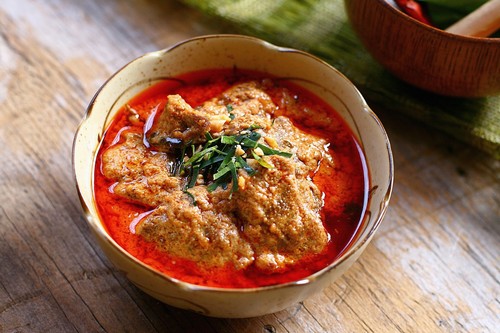
- Beef
- Kaffir Lime Leaves
- Coconut Cream
- Palm Sugar
- Fish Sauce
- Coriander Powder
- Cumin Powder
- Galangal
- Lemongrass
- Shrimp Paste
See the recipe card for full information on ingredients.
Frequently Asked Questions
Panang curry has ground peanuts, which isn’t used in red or green curries. Panang is also less spicy but sweeter than the red curry. As for green curry, it is sweet but not as sweet as the Panang. It’s spicier than Panang but not as spicy as the red curry. Furthermore, panang curry has the thickness that you won’t find in the other curries due to the coconut cream.
Thai Panang curry has a lot of delicious spices and herbs, adding to its delicious flavor. Read below to find the recipe.
This recipe has 611 calories per serving.
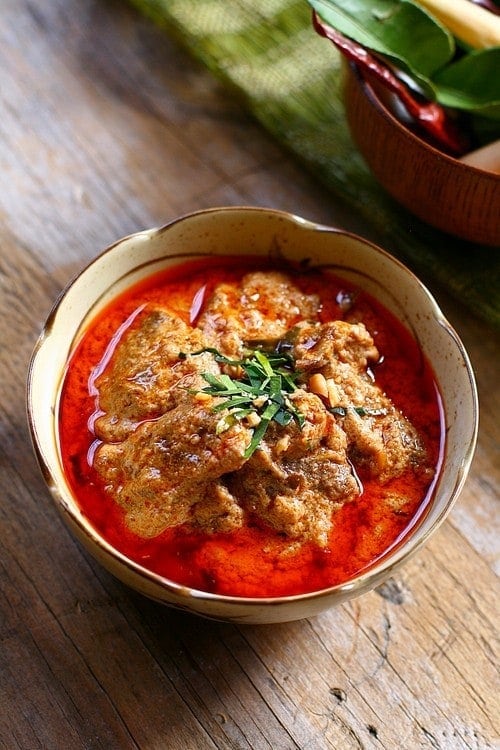
What To Serve With Beef Panang Curry
This dish is best served with white rice. For a wholesome Thai meal and easy weeknight dinner, I recommend the following recipes.
I hope you enjoy this post as much as I do. If you try my recipe, please leave a comment and consider giving it a 5-star rating. For more easy and delicious recipes, explore my Recipe Index, and stay updated by subscribing to my newsletter and following me on Facebook, Pinterest, and Instagram for new updates.
Other Recipes You Might Like
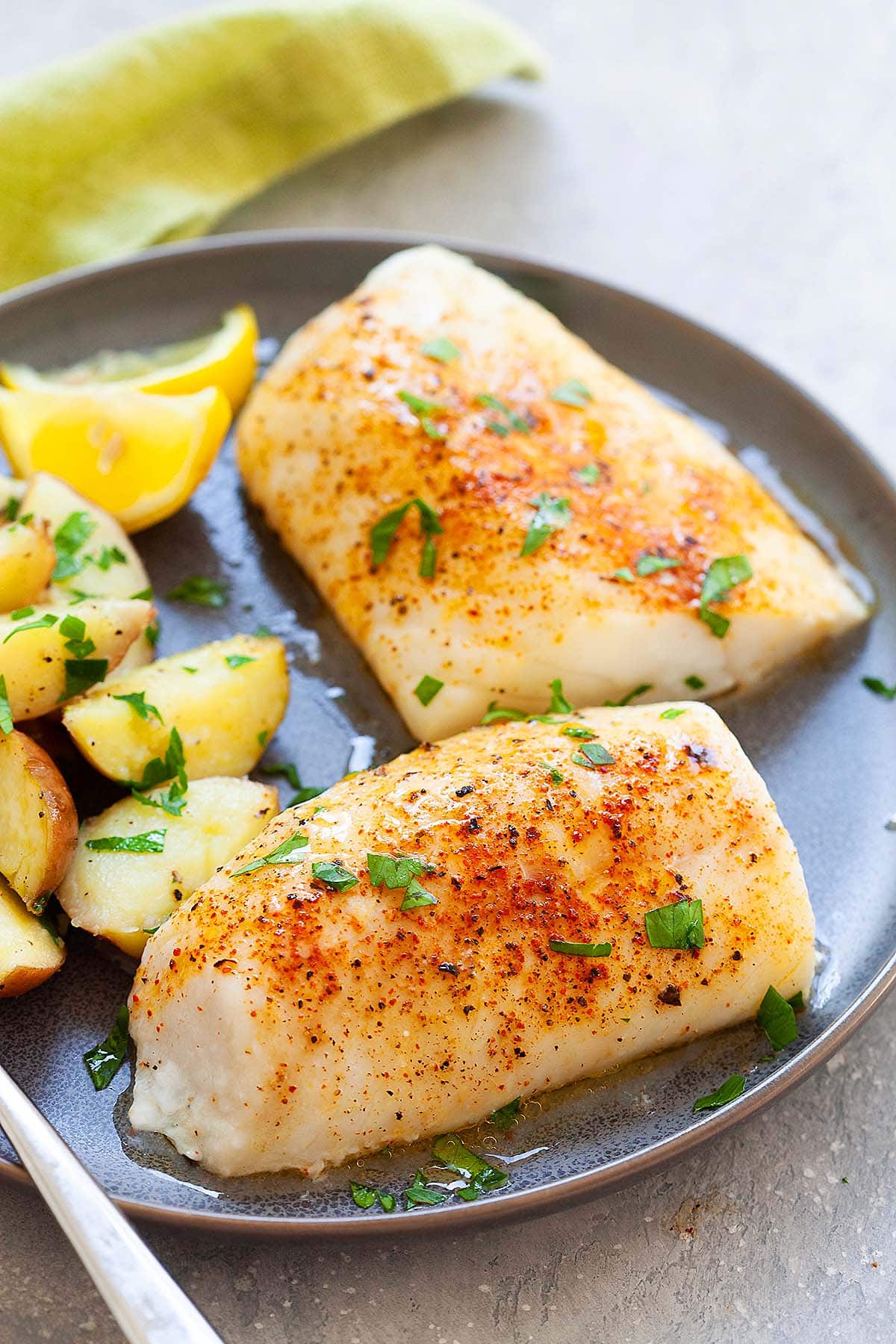
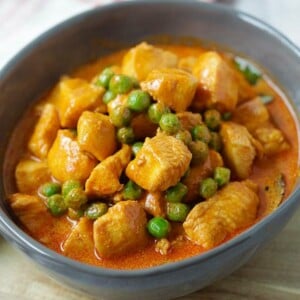
Beef Panang Curry
Ingredients
- 1 lb (500g) beef, sliced into about 1/4-inch (5mm) thick (I use chuck roast here)
- 5 tablespoons oil
- 3 kaffir lime leaves, thinly shredded
- 16 oz (455g) coconut cream , or coconut milk
- 1 tablespoon palm sugar, or sugar
- 1 tablespoon fish sauce
- salt and sugar , to taste
Panang Curry Spice Paste:
- 1 tablespoon oil
- 1 tablespoon water
- 2 1/2 tablespoons chili powder
- 1 teaspoon coriander powder
- 1 teaspoon cumin powder
- 1 teaspoon salt
- 1/2- inch (1cm) galangal, chopped
- 1 lemongrass, use white part only, cut into 2-inch (5cm) length
- 1 tablespoon cilantro stems , or roots
- 2 shallots
- 2 clove garlic
- 1 1/2 tablespoons red-skin roasted peanuts
- 1 teaspoon shrimp paste, belacan
Instructions
- Blend all the Spice ingredients into a smooth paste.
- Heat oil in a wok and stir-fry the kaffir lime leaves for 30 seconds. Add the spice paste and continue stir-frying for 1–2 minutes, or until fragrant. Reduce the heat to medium and stir-fry until the oil begins to separate slightly.
- Add the beef and cook for 2 minutes.
- Stir in the coconut cream and fry briefly for 1–2 minutes. Add the palm sugar and fish sauce, stir well, then cover the wok.
- Reduce the heat to medium-low and simmer for 45 minutes to 1 hour, or until the meat is thoroughly cooked and tender to your liking. Adjust the seasoning with salt or fish sauce, and sugar to taste.
- Add some water if you prefer a saucier, gravy-like texture, or if the dish appears too dry. Serve with hot steamed Jasmine rice.
Nutrition
Nutrition information is automatically calculated, so should only be used as an approximation.
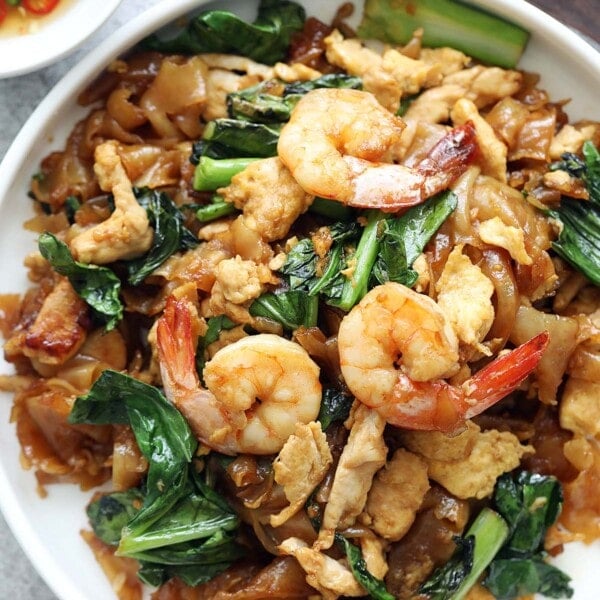
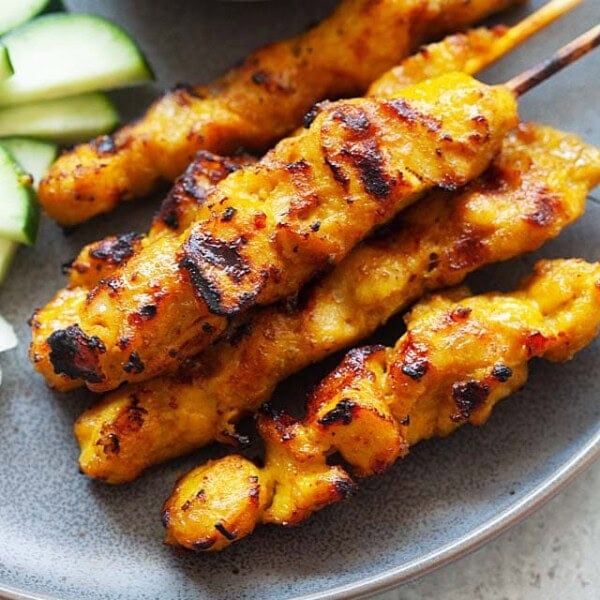
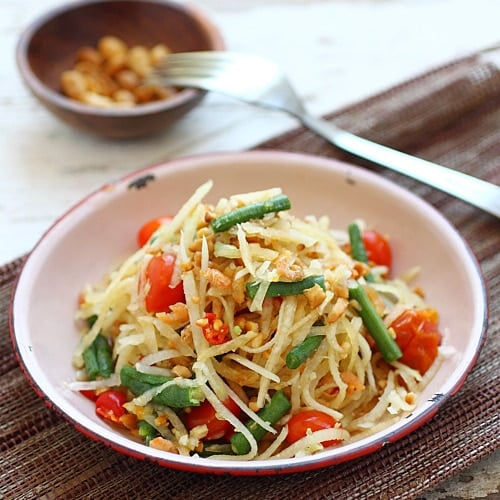
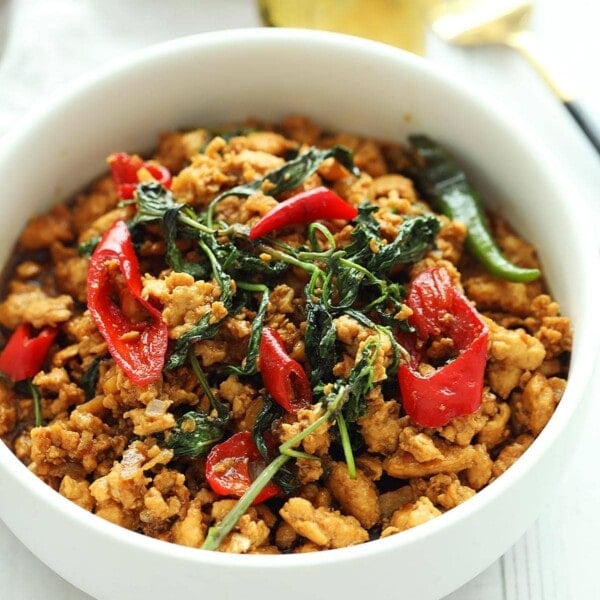






I will try this. There is a photo that looks just like the one my Malaysian amah used to make for us when we lived on the island way back in the mid 1960s. (In Jalan Bunga Mawar)
That’s awesome!
Can I use ‘Maesri Panang Curry Paste’ in the can rather than making it from scratch and if so how much should I use?
Yes, you can use Maesri Panang Curry paste, you an use 1-2 tablespoons depending on your spice tolerance. Start with one first and add more later. :)
Can I make this without the coconut milk?
Hi Noel, yes you can replace it with milk.
Perfect, wonderful
What kind of chili powder is used in this recipe? Thanks!
Any chili powder is fine.
Amazing recipe. Well done.
I have tried some of the other recipes on the site and they are equally good.
Keep up the good work
Hi Eddie, awesome. Please try more recipes on my site: https://rasamalaysia.com/recipe-index-gallery/
Thanks for such an aromatic paste recipe. I’ve just finished cooking it and despite being delicious, it is very saucy, not thick at all and very very spicy. Is it supposed to be really spicy?? Any suggestions on thickening my sauce and reducing the heat factor a bit! Thanks in advance.
Yes, it’s spicy but you can reduce the spice to your own taste. And yes, you can thicken your sauce.
I just tried this recipe and it came out great. I didn’t have any kaffir lime leaves on hand so I used lime zest instead. Thank you for sharing this recipe.
I can never find kaffir lime leaves in my grocery store. So what is a good substitute?
there isn’t really one i think, it’s hard to understand why without smelling them. Try small asian grocery stores, I went to like 5 to find one